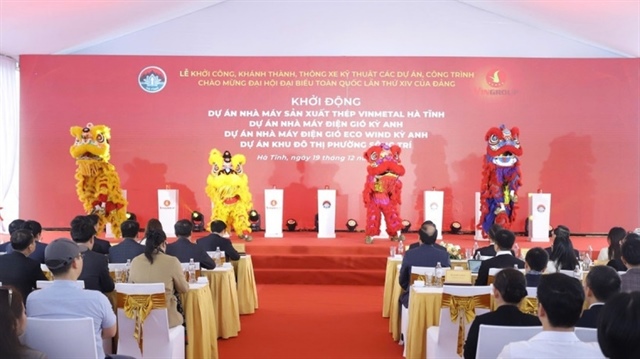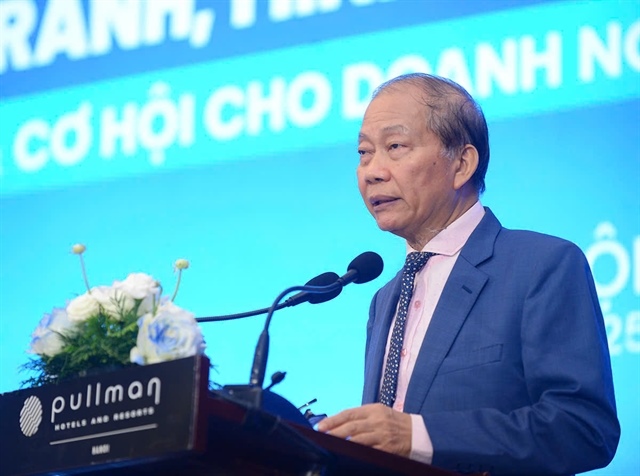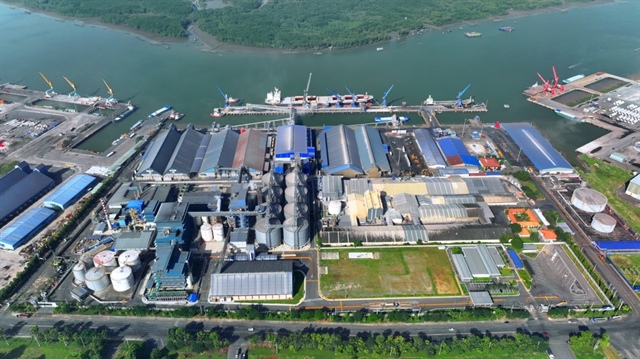IoT as a tool of creation in Industry 4.0
IoT as a tool of creation in Industry 4.0
The Internet of Things is rapidly changing the face of business operations, from manufacturing to sales and logistics. With industrial applications as the main drivers, Asia-Pacific economies are charging ahead to lead this revolution.

The industrial applications of the Internet of Things in the interconnected world of Industry 4.0 are gaining ground across the world.
Metering devices and actuators are rapidly installed on various machineries throughout production lines and are becoming increasingly leveraged. Whether it is logistics, manufacturing, or sales, companies are now collecting extensive amounts of data to fine-tune operations.
In fact, one of the biggest emerging issues is locating the needle of actually useful data in the haystack of information piled on by endless sensors.
Major gains
Kelvin Tan, ASEAN Sales leader for SIOT at Honeywell, foresees the Internet of Things (IoT) and intelligent, interconnected solutions as signals of a new era for industrial production. Pointing to estimates that by 2020 there will be around 50 billion devices connected to the internet, he foresees great opportunities for smart industrial solutions.
By some estimates, IoT could save companies 15 per cent in operational costs. As cited by PricewaterhouseCoopers (PwC), global industrial product companies expect digital or Industry 4.0 initiatives to lift revenue by an average of 2.9 per cent annually over the next five years. These benefits are rooted in data analytics which enable businesses to optimise processes, maximise throughput, reduce downtime, and minimise human risks. McKinsey and Company, cited by Honeywell, estimates that the global economic impact of IoT could be as great as $11.1 trillion by 2025.
APEC is taking a major part in the industrial application of IoT. With PwC forecasting a next wave of IoT adoption in the Asia-Pacific region within the next three years, nearly all CEOs surveyed by the consultancy firm expected to deploy connected devices to become light users. Currently, heavy users (companies that collect real-time information in at least four points of operation) account for 33 per cent of the respondents, while light users (one to three places) for 67 per cent. Furthermore, about 17 per cent of new adopters will become heavy users within the next three years.
Six in 10 APEC CEOs expect IoT initiatives to yield operational efficiencies or cost reduction. More pointedly, one in three saw added revenue in the launch of new IoT-related products and services, recognising the technology’s capacity as not only an ‘enabler’, but a tool for creation.
For now, however, APEC businesses are primarily interested in smart solutions to track customer preferences, shopping, and geolocation (23 per cent), as well as devices that can be embedded in remote equipment and locations (16 per cent), according to PwC.
Companies mostly use connected devices as point solutions (collecting and receiving information for a single purpose). Early reads on equipment malfunctions, tracking inventory, and connecting workforce are what industrial manufacturers, retailers, and offices are looking for. This proliferation of single-point information, is a far cry from the ultimate vision for IoT: a total interconnectedness where all information of a factory or even chains of factories are accessible on a compact surface and decisions are largely made automatically. True autonomous driving, as termed by Honeywell, is still a decade away yet, however, strides are being made every day, laying down the groundwork for IoT’s true form.
PwC foresees the greatest changes coming in the consumer arena. Citing CEOs’ deployment plans, the fastest growth in IoT usage will be for devices that track end-user/consumer behaviour. At the moment, however, industrial applications are in the fore, as the benefits of IoT are probably the most imminent and material across production lines. According to Honeywell, a typical refinery has as many as five unexpected shutdowns in a year, losing as much as $25 million. By analysing relevant data on performance and amortisation, defaults can be detected before they occur, enabling factories to take preventive measures instead of reactionary actions.
“You can feed information back into robots to change what they are doing or change how someone runs a particular machine. Perhaps you are actually overloading a machine and not even realising it, but you can get that information in feedback,” said Tan.
Indeed, analytics has the capacity to take businesses beyond understanding and reporting on what has happened, enabling them to predict defaults and eventually culminating in artificial intelligence systems that learn and discover on their own.
Inflated security concerns
On the other hand, businesses across the Asia-Pacific and the world carry grave security concerns. Disregarding qualms about the end-result of IoT and the apocalyptic vision of a super-connected hive-mind gaining sentience (which is still 10 to 15 years away), information security and potential cyber attacks are an imminent concern.
The lack of common technical standards for data usage to protect privacy are one of the leading concerns for APEC CEOs, who indicated that they would invest more in APEC economies if data security and privacy regulations and standards were harmonised across the region. Much of the existing regulations are outdated and inappropriate for the digital world, not to mention unconnected across borders.
Nevertheless, IoT and the Industrial Internet of Things (IIoT) are going strong. As the cost of sensor technology has been dropping and computing power has been skyrocketing, the quantity and variety of information manufacturers can collect has been swiftly expanding.
“With things connecting to the cloud and data getting less expensive, we can scale in a way we have not seen before,” Tan added. “Not only can I have a connected system across a factory, but across factories.”
Another arena where IoT solutions can make a great difference is logistics, where providers are now capable of capturing more data about their operations, enabling the real-time tracking for shipments and optimising routes, as well as stocks and warehouse space, for instance.
“This is a once-in-a-lifetime type of disruption,” said Kevin Haugh, chief strategy and product officer at Omnitracs, a leading provider of software solutions to the transportation and logistics industry. “A lot of this is driven by demands by customers to receive products and goods faster and on-demand.”
Personalised disruption
However, perhaps the biggest disruption in manufacturing will come in the personalisation and customisation of items. With IoT, producers are now or will soon be able to produce for individual demand. The best illustration of this progress is the Adidas Speed Factories in Germany and the US that work almost real-time, reacting to online orders customised by the buyers themselves – with a click here and there, setting colour, perhaps even pattern and other touches, and the robots in the factory start whirring away, creating the very shoe that has just been ordered.
At the same time, the future is coming to retail stores to answer the increasing demand for a more personalised experience. Honeywell has released its Connected Retail offering, which allows retailers to monitor and enhance the performance of their store associates. The solution optimises workflows and directly interacts with customers to help them find items – a great idea for larger supermarkets. According to Jason Burrell, global retail leader for Honeywell Safety and Productivity Solutions, this solution enables workers to provide better customer service.
Business models specifically built around IoT are taking shape across a wide spectrum of business operations to the degree where disruption is becoming the new norm.
As PwC stated, “It is no longer a matter of ‘if’ but ‘when’ businesses will make use of these technologies.” The global sensors and actuators market is estimated to grow to $13.4 billion in 2020 ($10.2 billion in 2015), mostly driven by the automotive and industry sectors.
The Asia-Pacific is in the forefront of this development, housing the world’s largest production and manufacturing nations: China, Japan, South Korea, and Vietnam. The region posts the fastest growth in IoT and IIoT applications, as it held 36 per cent of the market in 2005, which will increase to 56 per cent by 2020. Indeed, many of the technologically-advanced economies hold great ambitions: Singapore wants to be the first smart nation in the world, while South Korea has a master plan for building IoT infrastructure. China is busy building machine-to-machine ecosystems to increase production capacity. In Vietnam, the IoT platform plays a critical role in the process of approaching Industry 4.0. The Vietnamese government pledged to prioritise investment in information and communications technology by 2020. In 2016, Hoa Lac IoT Lab – Vietnam’s first IoT lab – was constructed to support technology startups concentrating on IoT to design connected applications and solutions.




















